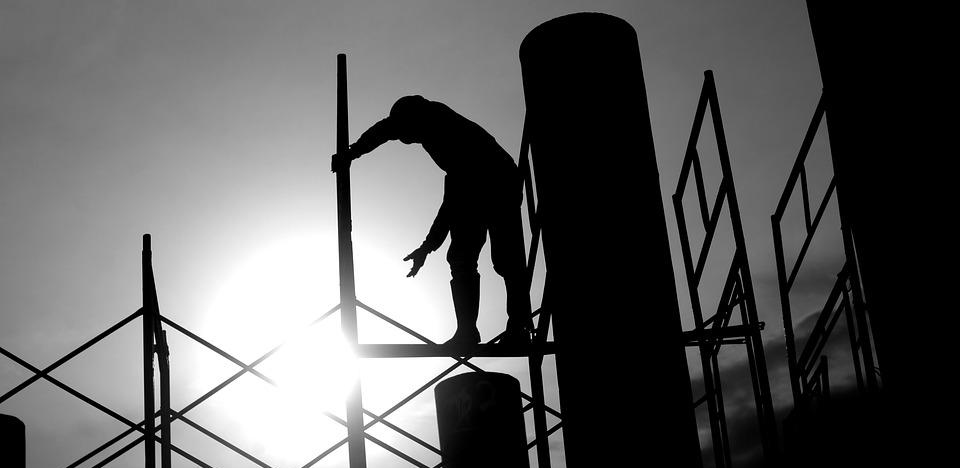The Components and Benefits of Concrete Cooling
Contents |
[edit] Background
Concrete cooling is a method to build robust and long-lasting structures. In this article, we will discuss the definition, importance, and components of concrete cooling.
[edit] Science of the concrete
In laymen’s language, people use the terms concrete and cement interchangeably but it is important to know the distinction in order to understand the importance of concrete cooling. Cement is the mixture that is mixed with water and forms the material called concrete. The hydration of the concrete is an exothermic process which means when the cement is mixed with water it releases humongous heat (~200 degrees Fahrenheit).
[edit] What are the problems associated with hot concrete?
The process of hardening concrete is known as curing. The high curing temperatures for concrete result in decreased tensile strength. A problem arises in large pour settings in which the outer concrete is less warm than the inner concrete, resulting in non-uniform density. Subsequently, the poor quality of concrete can create issues with the overall strength of the structure.
[edit] What is concrete cooling and why is it important?
Concrete cooling is the process of reducing the temperature of the concrete to guarantee the strength and quality of the concrete pour. There are numerous disadvantages of using hot concrete such as unequal density and poor tensile strength. In order to assure the quality and strength of the concrete pour the mixture must undergo concrete cooling procedures to reduce the temperature. The temperature-controlled concrete eliminates the risk of expansion in the volume of concrete due to heat exchange. The heat exchange also leads to cracks in the sets, so to avoid it the initial filling temperature should be kept low. However, the specifications of concrete cooling systems vary according to the application and need of the project.
[edit] What are the major components of concrete cooling?
Below are the major components of concrete cooling systems. Although, the components used may change as per the company and the necessity of the project.
[edit] Water chilling plant
The use of water with considerably lower temperatures is an efficacious concrete cooling strategy. Water chilling plant is used to lower the temperature of the water to near freezing point. The components of water chilling plants are compressors, control panels, pumps, heat exchangers, and condensers.
[edit] Cold-water tank
Once the water is chilled it will need to be stored in an insulated tank to maintain its temperature. The cold water tank includes a pump for circulating the water into other parts of the cooling systems. The size of the tank will typically vary according to the requirements of the concrete cooling systems.
[edit] Ice plant
Another concrete cooling procedure is to add ice, especially ice flakes into large containers such as drums. Since the size of flake ice is small and has a relatively low surface area, these properties ensure that flake ice will melt rapidly so that the cement mixture remains uniform. Ice plants fabricate the ice that is used in the concrete cooling process.
[edit] Aggregate cooling with air
Air cooling is a procedure that doesn’t require much space. The process involves the blowing of cool air in a stream through a silo. Nozzles are installed below the silos to render a constant air stream. The use of air cooling is not only energy efficient but also eco-friendly.
[edit] Post cooling
Some projects require thoroughly cooled concrete that might require another cooling method along with the other cooling techniques. Post-cooling procedures are used in the construction of dams to allow very intensive concrete cooling. In the ultimate option of the post-cooling systems, the chilled water runs through a network of pipes throughout the concrete.
[edit] External links
- https://www.researchnester.com/sample-request-3386
- https://www.researchnester.com/reports/concrete-cooling-market/3386
[edit] Related articles on Designing Buildings
- Cast-in-place concrete.
- Concrete.
- Concrete batching plants.
- Concrete vs. steel.
- Concreting plant.
- Decarbonising concrete in the UK.
- Glass reinforced concrete.
- Lime concrete.
- Portland cement.
- Precast concrete.
- Prestressed concrete.
- Screed.
- Self-compacting concrete.
- Slip form.
- Smart concrete.
- Stratification of concrete.
- Testing concrete.
- The properties of concrete.
- Types of concrete.
- Vibration Compaction Technology.
Featured articles and news
One of the most impressive Victorian architects. Book review.
RTPI leader to become new CIOB Chief Executive Officer
Dr Victoria Hills MRTPI, FICE to take over after Caroline Gumble’s departure.
Social and affordable housing, a long term plan for delivery
The “Delivering a Decade of Renewal for Social and Affordable Housing” strategy sets out future path.
A change to adoptive architecture
Effects of global weather warming on architectural detailing, material choice and human interaction.
The proposed publicly owned and backed subsidiary of Homes England, to facilitate new homes.
How big is the problem and what can we do to mitigate the effects?
Overheating guidance and tools for building designers
A number of cool guides to help with the heat.
The UK's Modern Industrial Strategy: A 10 year plan
Previous consultation criticism, current key elements and general support with some persisting reservations.
Building Safety Regulator reforms
New roles, new staff and a new fast track service pave the way for a single construction regulator.
Architectural Technologist CPDs and Communications
CIAT CPD… and how you can do it!
Cooling centres and cool spaces
Managing extreme heat in cities by directing the public to places for heat stress relief and water sources.
Winter gardens: A brief history and warm variations
Extending the season with glass in different forms and terms.
Restoring Great Yarmouth's Winter Gardens
Transforming one of the least sustainable constructions imaginable.
Construction Skills Mission Board launch sector drive
Newly formed government and industry collaboration set strategy for recruiting an additional 100,000 construction workers a year.
New Architects Code comes into effect in September 2025
ARB Architects Code of Conduct and Practice available with ongoing consultation regarding guidance.
Welsh Skills Body (Medr) launches ambitious plan
The new skills body brings together funding and regulation of tertiary education and research for the devolved nation.
Paul Gandy FCIOB announced as next CIOB President
Former Tilbury Douglas CEO takes helm.
























